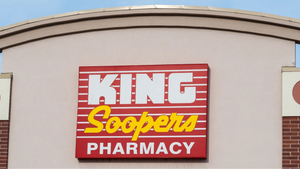How Savvy Retailers Are Keeping Energy Costs in ControlHow Savvy Retailers Are Keeping Energy Costs in Control
Grocers such as DeCicco & Sons are increasingly prioritizing efficiencies as a linchpin of their strategies. Grocers such as DeCicco & Sons are increasingly prioritizing efficiencies as a linchpin of their strategies.

When it comes to equipment in grocery stores, a lot of the fanfare has been reserved for experiments with autonomous delivery and new technologies such as artificial intelligence found in Amazon Go stores that merge computer vision with sensor fusion.
While new-age developments are exciting, especially for the consumer, what isn’t always so exciting but is every bit as important—if not more so—for retailers is the equipment that has become synonymous with a well-run store. Simple things that aren’t really so simple, such as refrigeration and heating and cooling systems, aren’t very sexy for marketing purposes but are extremely important when it comes to efficient operation of the store. And many of these systems are now smart-enabled, so adjustments can be made on the fly or when the manager is out of the store.
Consumers like their stores to be energy-efficient and have a low carbon footprint, but that isn’t always easy to see and it’s not an easy story for the retailers to share. But some retailers, such as DeCicco & Sons in Westchester County, N.Y., have made efficiency a linchpin of their strategy. John DeCicco Jr., CEO of DeCicco & Sons, was influenced early on by an inventor friend who showed him how businesses could be successful while also helping the environment. “There is a win-win scenario,” DeCicco says. “Creating that win-win scenario in-store where you end up benefiting both the environment and benefiting the business while you’re doing something good—it makes a lot of sense.”
Smart Controls Are Key
At DeCicco & Sons’ eight (and soon to be nine) stores, the room that houses all of the technology needed to run the equipment has become the virtual heart of the operation. The amount of space needed has decreased as more of the operations are able to be controlled through smartphones and tablets. However, all the information needs to be filtered through a control unit. DeCicco’s uses Emerson Einstein, which controls all case temperatures, ballast controls, lighting, night curtains, rack compressors and fan speeds on the roof. Essentially all of the variable aspects of the entire store, and the constant monitoring and adjusting, leads to more efficiency, because less energy is required to bring something back to the right level or temperature.
DeCicco’s newest store, which opened this past spring in Somers, N.Y., takes all the lessons from previous locations, including a LEED-certified store in Larchmont, N.Y., to create the company’s most efficient store yet. Store features include a CO2 refrigeration system with case controllers, valves that are computer-monitored to control the amount of refrigerant that flows through the system. Not having the valves open all of the time creates a more efficient system.
The refrigeration system also has lead compressors with variable speeds for both medium and low temperatures.
“The refrigerator temperature and the freezer temperature both have a variable speed compressor that perfectly matches the demand at any given point in time, so you’re matching the refrigeration load with the case load basically synchronously,” says DeCicco. By constantly monitoring the temperature, the compressors end up running less while keeping the case temperature consistent.
Controlling the Compressors
On the Baltimore Aircoil Co. system it has adopted, DeCicco & Sons uses adiabatic condensers that have a moisture pad to help lower the temperature needed to condense the gas. “The compression needs to work less with that,” DeCicco says. “It’s using water on a sponge layer to lower the temperature of the condensing equipment to make the compressions more efficient.”
The benefit is lower energy use because less electricity is needed to run the compressors.
The store also is repurposing the water generated by the refrigeration system, which isn’t a new idea, but how it is used is “very new and innovative,” DeCicco adds. The Somers store features 20 miles of tubing under the floor to provide radiant heat, which was possible because the DeCicco family built the store from the ground up and could lay the tubing before pouring the concrete.
“We’re taking the CO2 waste heat and we’re basically pumping it through the floor of the store,” he says. “CO2’s [waste heat] temperature is about 50-70 degrees hotter than a traditional system’s waste heat temperature, so it’s much more usable than other systems.” Nearly all of the store’s heat comes from the repurposed water, cutting back significantly on the amount of propane that would traditionally be needed to heat the store.
Don’t Forget the Kitchen
The Somers store, which has a high ceiling to accommodate the bar and seating area, uses large fans to push the heat that naturally rises back down to customer level to keep the store’s temperature comfortable for shoppers. The radiant heating system along with a closely monitored HVAC system also helps keep the store’s humidity at a comfortable range.
“The controls of the HVAC system are pretty intense with how much outside air and bouncing CO2 levels [there] are for the actual people within the store to make the environment as comfortable as possible,” DeCicco says. Even having a white roof on the store allows a lot of heat to be reflected instead of absorbed, which helps make the store’s interior temperature easier to control and more energy-efficient.
DeCicco & Sons carefully monitors all places where air comes in or out of the store, and this includes the exhaust system in the kitchen. The system has demand controls on both the cooking speed of the exhaust fan and the makeup air fan to not overpower the fan use in the store. “If the exhaust fan is taking all your conditioned, treated air out of the store and you’re replacing it with conditioned air or heated air too much, you’re wasting energy,” DeCicco says. “If you’re doing a little bit of cooking, you want your hood to go very slow and bring in a little bit of outside air. But if you’re doing a lot of cooking, then you want to bring a lot of outside air and you need a lot of exhaust. You want to keep those systems in perfect balance, which also helps limit the energy use of the store as a whole.”
Cut Energy Use by One-Third
The ninth DeCicco & Sons store that will open next summer will be a remodeled store, so the DeCiccos won’t be able to use radiant heat. However, they will be able to apply all of their energy-efficient lessons to create a store that is as efficient as possible. When it was in operation by the previous tenants, the store used almost 3 million kilowatt-hours of electricity and had a demand usage of almost 400 kilowatts, DeCicco notes. After the remodel, he predicts that it will use 1 million kilowatt-hours a year for electricity and a demand of 200 kilowatts.
“So that’s how much more efficient the stores that we’re building now are than, say, the ones a generation ago,” he says.
More efficient grocery stores just makes business sense. The drop in utility usage, by as much as one-third in DeCicco’s case, is the most obvious benefit, but the intangible benefits include the consumer confidence bump the store can get by being an eco-friendly company.
To recognize retailers that have curtailed refrigerant use, the Environmental Protection Agency (EPA) created the GreenChill Gold Level Certification Award, which was recently bestowed on H-E-B’s Buffalo Heights store in Houston. The location uses 70% to 80% less refrigerant than a typical store of its size, which will reduce its emissions by 75%, H-E-B said. The San Antonio-based retailer plans to continue to adopt more sustainable refrigeration technologies and expects more honors to come from the EPA for its green-grocer efforts.
About the Author
You May Also Like






